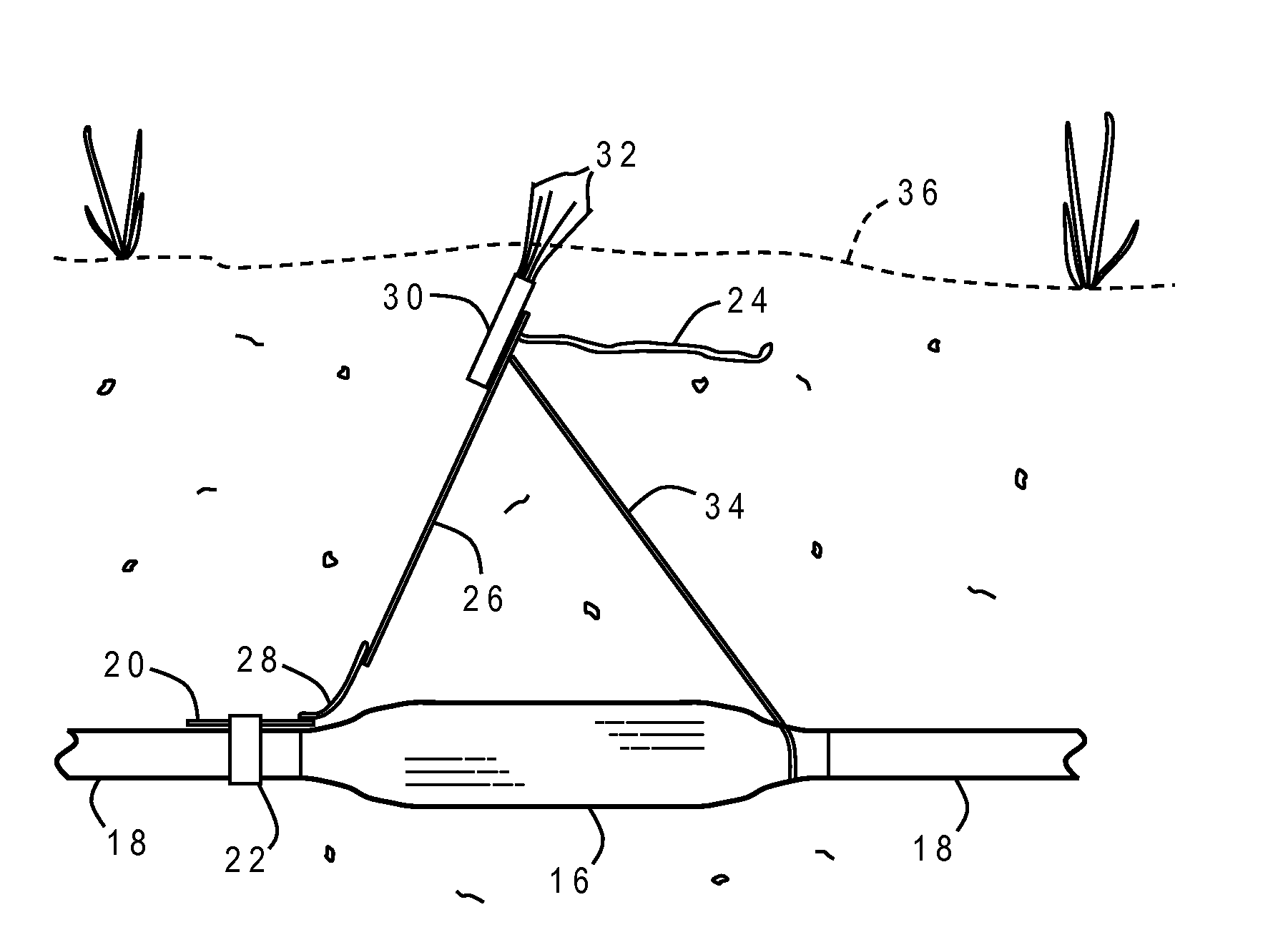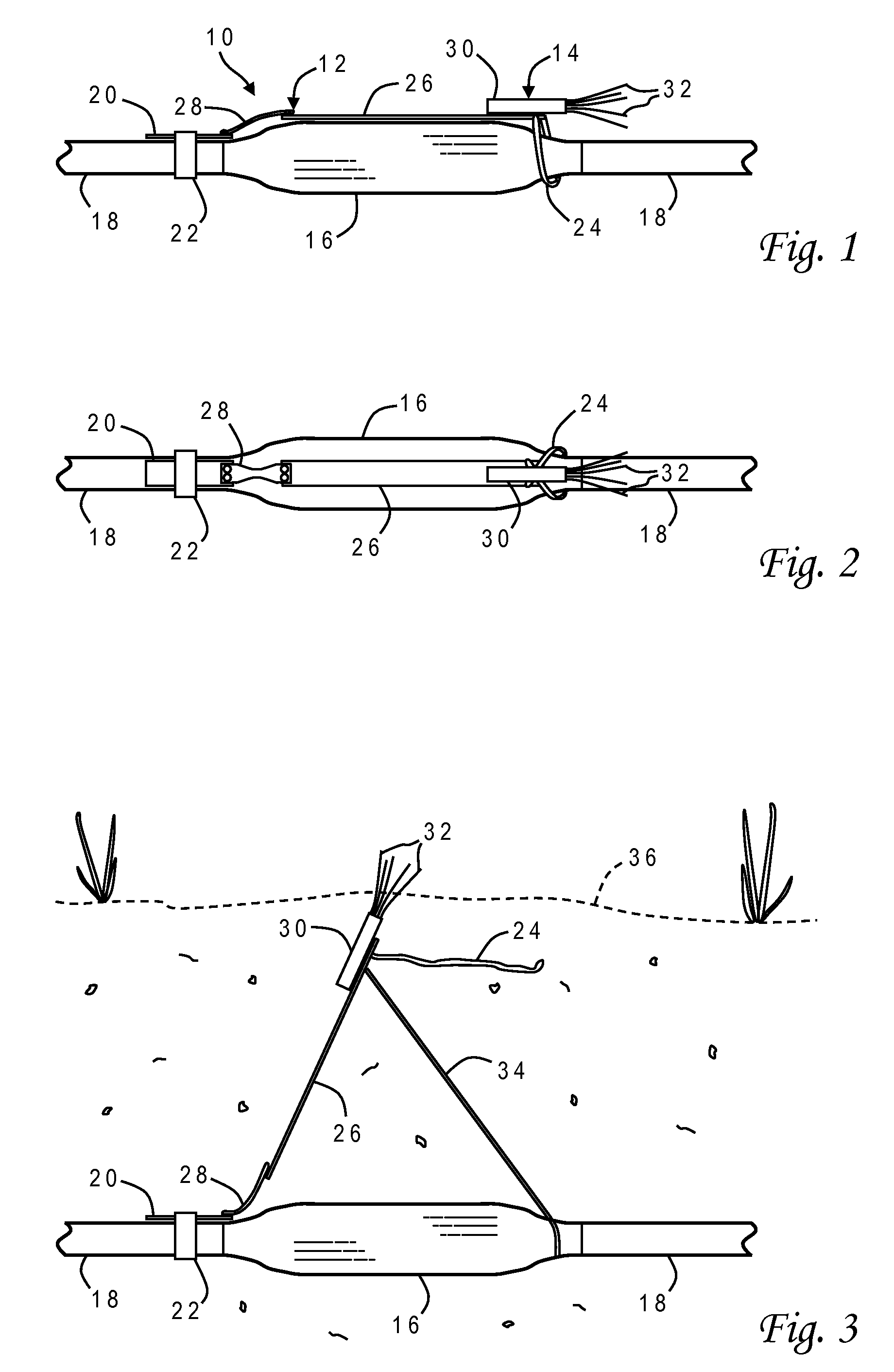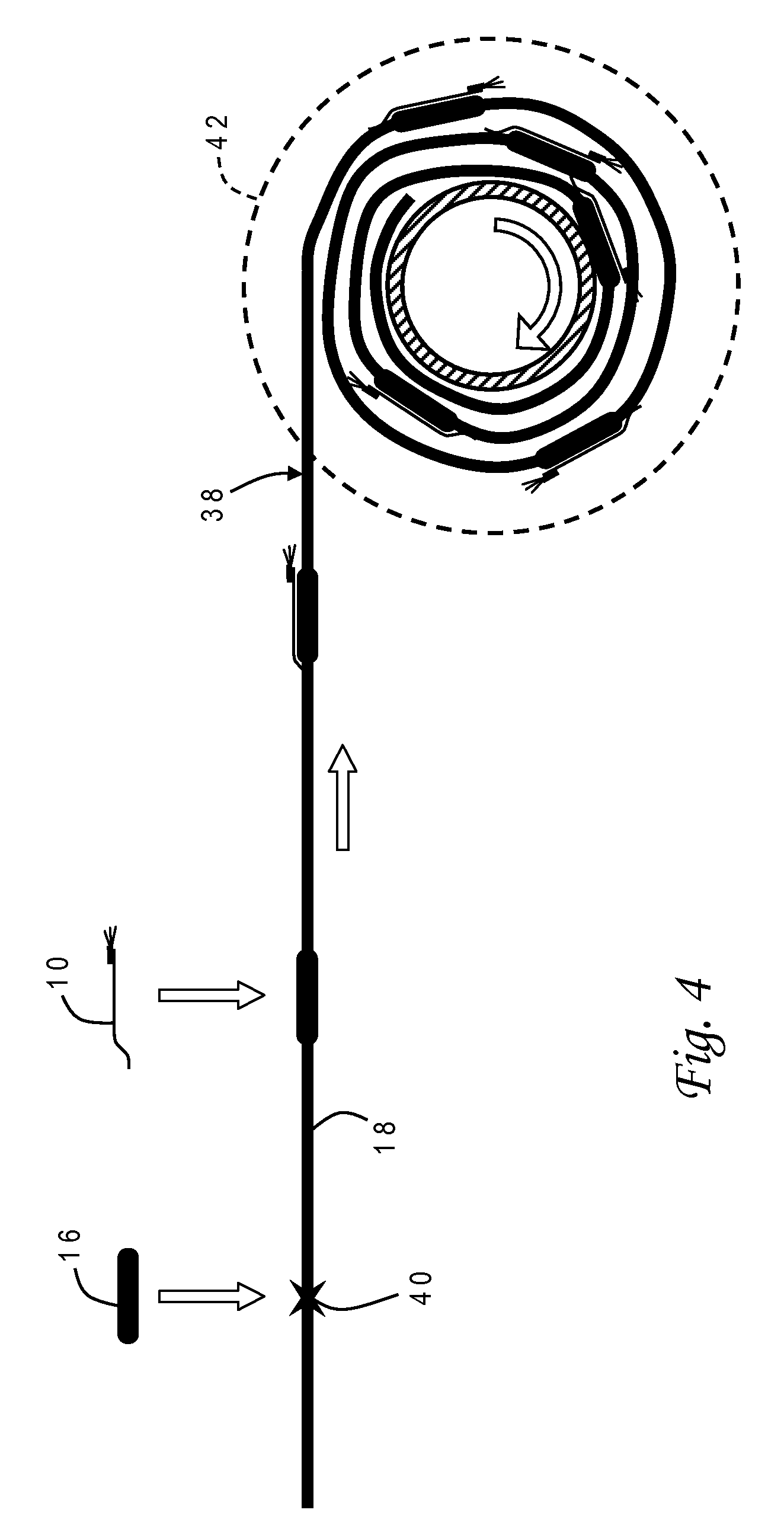Pop-up cable electronic marker
a technology of electronic markers and pop-up cables, which is applied in the direction of mechanical actuation of burglar alarms, subaqueous/subterranean adaptions, instruments, etc., can solve the problems of inability to detect any surface instrumentation, inconvenient installation, and inconvenient maintenance and maintenan
- Summary
- Abstract
- Description
- Claims
- Application Information
AI Technical Summary
Benefits of technology
Problems solved by technology
Method used
Image
Examples
Embodiment Construction
)
[0028]With reference now to the figures, and in particular with reference to FIGS. 1 and 2, there is depicted one embodiment 10 of a pop-up electronic marker fixture constructed in accordance with the present invention. Pop-up electronic marker fixture 10 is generally comprised of an extension member 12 and an electronic marker 14 affixed to one end of extension member 12. Pop-up electronic marker fixture 10 is shown attached to a cable 18 at a re-enterable closure 16. In this exemplary embodiment, cable 18 is a copper wire or fiber optic telecommunications cable (e.g., for telephone service, cable television or broadband internet access) and closure 16 surrounds an access point of the cable such as a splice or drop.
[0029]Pop-up electronic marker fixture 10 is shown in FIGS. 1 and 2 in a retracted position in which the longitudinal axis of extension member 12 is generally parallel with the longitudinal axis of cable 18 and snugly fits adjacent closure 16. One end of extension membe...
PUM
 Login to View More
Login to View More Abstract
Description
Claims
Application Information
 Login to View More
Login to View More - R&D
- Intellectual Property
- Life Sciences
- Materials
- Tech Scout
- Unparalleled Data Quality
- Higher Quality Content
- 60% Fewer Hallucinations
Browse by: Latest US Patents, China's latest patents, Technical Efficacy Thesaurus, Application Domain, Technology Topic, Popular Technical Reports.
© 2025 PatSnap. All rights reserved.Legal|Privacy policy|Modern Slavery Act Transparency Statement|Sitemap|About US| Contact US: help@patsnap.com



